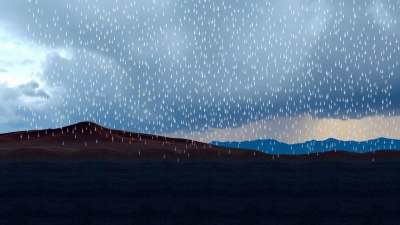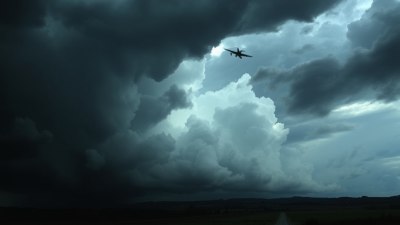What Causes Sunshowers
Discover the fascinating science behind sunshowers and why they occur.

This image was created with the assistance of Freepik
Sunshowers are a delightful and somewhat curious phenomenon that can intrigue anyone who witnesses them. These occurrences happen when rain falls while the sun is shining bright in the sky, creating a captivating effect that often leads to vivid rainbows and a unique blend of weather elements. Understanding what causes sunshowers involves delving into meteorological principles, atmospheric conditions, and other contributing factors that work simultaneously to create these special weather events.
To comprehend the phenomenon of sunshowers, one must first understand the basic mechanics of rain and sunshine. Rain is produced when moisture-laden air rises, cools, and condenses into water droplets that become heavy enough to fall to the ground. Normally, rain occurs in overcast conditions, but sunshowers present a different scenario where sunlight accompanies raindrops. This contradiction is where the magic of sunshowers lies.
The Role of Clouds
One of the primary factors contributing to sunshowers is the presence of certain types of clouds. Typically, the rain comes from cumulus or cumulonimbus clouds, which can develop and generate rain even in partly cloudy or mostly clear skies. During a sunshower, these rain-producing clouds may be located relatively far from the area experiencing sunshine. For example, rain can be falling from clouds that are much higher up in the atmosphere while the sun remains unobstructed in the opposite direction.
Rainfall from Distant Storms
Another intriguing aspect of sunshowers is the possibility of rainfall originating from distant storm systems. If a thunderstorm or rain shower is occurring several miles away, it can produce rain that spreads over an area experiencing clear skies. In such instances, you may see a spectacular sunshower while the heavy rain is happening far off in another location. This interplay creates a fascinating contrast between bright sunlit skies and falling rain.
Geographical Considerations
Geography plays a role in the occurrence of sunshowers as well. Areas with fluctuating weather patterns, such as regions near mountains, bodies of water, or coastal areas influenced by maritime climates, can often experience sudden shifts in weather. These shifts can lead to sporadic rain mixed with warm sunlight, producing sunshowers. The assessment of local weather conditions, topography, and wind patterns become essential when investigating the likelihood of sunshowers.
Sundogs and Optical Effects
Sunshowers can create fascinating optical phenomena, such as rainbows and sundogs. When raindrops scatter sunlight, they can create refracted light beams that produce beautiful visuals. Rainbows, typically visible during or after rain, occur due to the combined effects of sunlight hitting water droplets, resulting in a spectrum of colors. These mesmerizing arcs of light are often a hallmark of sunny rain, adding to the allure of sunshowers.
Sunshower Myths and Folklore
Throughout history, various cultures have associated sunshowers with myths and folklore. Some people believe sunshowers occur when it rains while the sun is shining, signifying a marriage between a fox and a bear. Others associate sunshowers with good luck, spurring positivity and prosperity for those who experience them. Many indigenous cultures craft stories entwined with nature that explain why these moments happen, further illustrating the relationship between humanity and the environment.
Seasonal Factors
Seasonal changes also play a significant role in the occurrence of sunshowers. For instance, in spring and summer, the atmospheric conditions are more conducive to the development of these weather events. The mixing of warm and cool air creates ideal situations for cumulus clouds to form, leading to instability that subsequently produces rain showers while the sun shines. On the other hand, winter conditions typically showcase more consistent overcast skies and reduced chances for sunshowers, making these warm-weather events more magical in contrast.
Weather forecasting is a crucial aspect of understanding when and where sunshowers might occur. Meteorologists analyze radar imagery, satellite data, and ground measurements to predict rain events. Though forecasting specific instances of sunshowers can be challenging, technology increases the chances of predicting these phenomena in real-time. By closely monitoring weather fronts, pressure systems, and cloud formations, forecasters can provide insight into potential sunshowers, enhancing our understanding of when to expect this captivating natural display.
Observing Sunshowers Safely
Observing a sunshower can be a delightful experience, but safety should be a priority, especially if thunder and lightning accompany the rain. If you find yourself outdoors during a sunshower, it’s wise to seek shelter if you notice dark clouds, hear thunder, or see lightning flashes. However, if the sun is shining brightly and the rain is light, it can be an excellent opportunity to enjoy nature's display without any immediate risks to your safety.
In summary, sunshowers present a remarkable intersection of meteorological phenomena that combines sunshine with rain, creating awe-inspiring sights that can evoke joy and wonder. Factors such as cloud formation, distance from storm systems, geographical influences, and seasonal variations all play essential roles in the development of sunshowers. By appreciating the complex interactions within our atmosphere, we can gain a more profound respect for the beauty of nature and the unexpected surprises it offers. The combination of rain and sunshine has been a source of inspiration for cultures worldwide, symbolizing everything from marital unions to good fortune. So, the next time you witness a sunshower, take a moment to reflect on the science, stories, and sheer beauty that accompany this extraordinary weather phenomenon.











